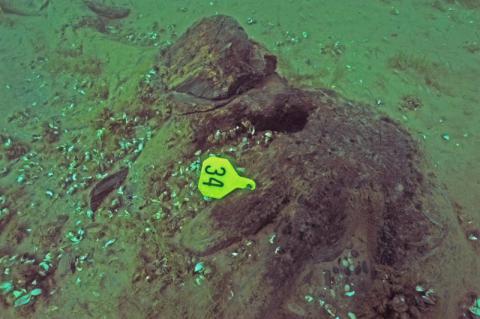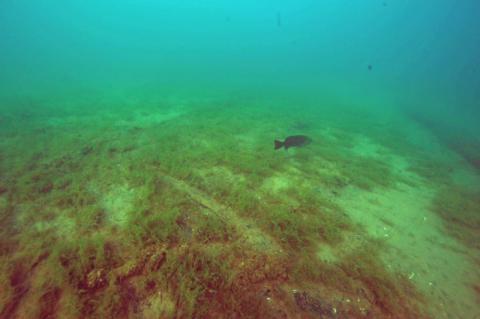• Mid Holocene drown forest in Lake Huron
• Nipissing transgression in the southern Lake Huron Basin
Remains of a Holocene drowned forest in southern Lake Huron discovered offshore in 12.5 m of water (164 m above sea level), 4.5 km east of Lexington, Michigan. USA. With help of deep-water divers we collected twenty cross-sections from stumps and logs in situ. Ages of wood range from 78970-7870 Cal Yrs BP and 7300-7400 Cal Yrs BP. Tree-ring analysis of stumps resulted in the development of 2 floating tree-ring chronologies of white-cedar and pine (white pine group). Additionally wood of larch and ash was found at the site. The site provides evidence of a briefer forest interval of no more than c. 400 years at this elevation during the Nipissing transgression. Macrofossil evidence indicates a forest comprising primarily conifers equivalent to the modern “rich conifer swamp” community, despite generally low regional abundance of these species in pollen records. Stable-carbon isotope composition of the tree rings falls within the range of modern trees from this region, but the stable-oxygen composition is consistent with warmer conditions than today. Both our tree-ring and isotope data provide support for a warmer environment in this region, consistent with a mid-Holocene thermal maximum. This drowned forest provides a dated elevation in the Nipissing transgression at about 6420 14C BP (7300-7400 Cal Yrs BP) in the southern Lake Huron basin, a few hundred years before reopening of the St. Clair River drainage.


